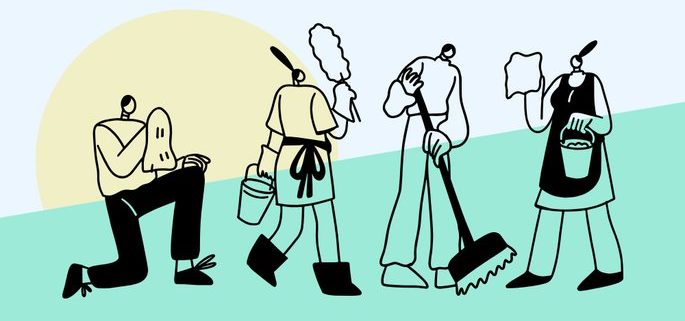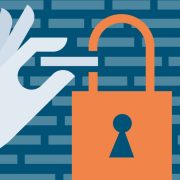House Cleaning Pricing Guide: How You Should Price House Cleaning Jobs
How should you quote a house cleaning service?
Unfortunately, answering this question can be quite complex, as each cleaning business has unique costs they should factor into their prices. So, you can’t simply quote whatever your competitors are charging and use the same approach.
However, while there’s no easy answer to this question, there are set guidelines we can use to properly set our house cleaning pricing so you can come up with a reasonable but profitable rate.
Below, we will discuss how we can make such estimations by following just some simple steps.
Step 1: Visit The House
It’s very important to never give estimates over the phone or after seeing a photo/video of the house: always see the house in question physically unless it’s absolutely impossible to doing so.
Why is this very important? Because you need to accurately estimate how long it will take to clean the house. Your customers might have a different expectation about how long they think it will take you, or they might deliberately try to get a lower rate. Many customers, however, simply don’t have a clue about how long a professional cleaning job should take.
Measure the space accurately (you can use various tools to do this) so you can get an accurate idea of the size you are dealing with.
Step 2: Accurately Estimate Time
Now that you’ve surveyed the house, it’s time to estimate how long it will take to thoroughly clean the space.
While this might vary depending on many different factors, the general rule of thumb is that you can clean around 600-700 square feet per hour. Typically a 2,000 square foot home should take around three hours to clean.
Obviously, if the house has been vacant for a long time or deep cleaning is required, it can take more time. On the other hand, there are conditions where cleaning will obviously take less time.
As you get more jobs, it’s best to keep a log of how long each type of cleaning job takes you, so you can use this as your foundation for future pricing.
Step 3: Calculate Labor Costs
Even if you are the only people who’ll do the cleaning, you should estimate an accurate labor cost and establish a proper hourly rate.
In the U.S., cleaners are paid $13.19/hour, so you can use this as a benchmark although the number should be higher in top-paying states like New York or Nevada, among others. If you have more than one employee, then you might need to charge different rates depending on their experience levels and other factors.
You can use scheduling and field service management solutions like Fieldd to help streamline and automate this process.
Now, simply multiply the number of hours you’ve estimated on the previous step with the established hourly rate.
For example, if you estimated that you are going to clean a 2,000 square foot house in three hours and you are going to use $13.5 as the hourly rate, then you’ll charge the client $40.5 if you are working alone.
Also, don’t forget to factor in taxes depending on your local policies. Typically payroll taxes in the uses will cost 18% of the total labor cost. So, using the above example, your labor cost is $40.5, so the payroll tax is $7.29 (18%). So, the total cost including payroll tax will be $47.79.
Step 4: Factor In Supplies
Accurately estimate the supplies you’re going to use in the cleaning process (i.e. cleaning products, new equipment, etc.).
If you are unsure, the general rule of thumb is to add around 5% to 5% of the total labor cost (including tax) as supplies cost.
So:
Total cost after tax=$47.79
Supplies cost: $2.86 (6% of $47.79)
New total so far: $50.65
Step 5: Factor In Additional Overhead
Your overhead cost is any cost that is not actually caused by the job at hand but should be factored in. Overhead costs can include office rent, promotional costs, and so on.
Again, while this may vary, you should add around 50% as overhead costs.
So:
Total cost so far=$50.65
Supplies cost: $25.32 (50% of $47.79)
New total so far: $75.82
Step 6: Set Your Profit
Now you’ve figured out all the essential costs for this specific cleaning job, and the last step is to add a markup so you can make a profit from this job.
How much profit you’d want to set will be up to you, but most cleaning businesses add around 30% to 35% on top of your total costs. You can, however, lower this markup if you want to be more competitive and land more clients. However, charging too cheap might hurt your business in the long run, so finding the right balance is very important here.
For the sake of this guide, let’s assume you are going to charge 30% as your markup, then:
Total cost so far=$75.82
Markup: $22.74
Final hourly rate: $98.57
Depending on your location, you might be required to charge sales tax, so check your local regulations to whether you are required to do so. If yes, simply add the sales tax on top of this final hourly rate.
What’s The Industry Average?
According to Home Advisor, the current national average to clean a single-family home is $168. The average cost of hiring a cleaning service in the U.S. can range from $25 to $90/hour per cleaner.
Obviously, the number can vary depending on the home’s condition, frequency of service, and other complexities. You can charge customers about $90 to clean a house less than 1,000 square feet in size, and if the building is very large, usually it gets discounted per square foot rates.
Conclusion
By using the six simple steps we have shared above, you can accurately estimate how long you can finish a cleaning job and how much you should charge. Obviously, there are many different factors with each project that might affect your final calculations, but these steps can act as a foundation as you add other elements to the equation.
















